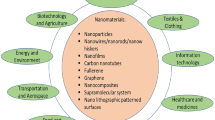Abstract
The incorporation of small volume fractions of nanoscale graphitic particles into varied base materials has been explored across fields ranging from automotive to aerospace to commercial plastics, with the goal of utilizing their enhanced thermal conductivity, electrical conductivity or mechanical strength. Percolation theory has emerged as a useful tool to aid in mapping and predicting the enhancement of properties based on the size and conductivity of incorporated single-walled carbon nanotubes relative to their less conductive base materials. These tools can aid researchers in the development of next generation smart nanomaterials. In this paper, we discuss the use of homogeneous fractions of length- or chirality-sorted single-walled carbon nanotubes (SWNTs) which are incorporated into thin film networks, and cement composites, and are evaluated in terms of their conductivity, mechanical properties and noise spectrum at critical percolation. We demonstrate that, near the percolation threshold, the conductivity of these highly characterized SWNT films exhibits a power law dependence on the network geometrical parameters. We also present our findings on the development of incorporated thin film SWNTs for the development of sensing technology for novel non-destructive failure diagnostic applications. SWNTs are able to be used as benign inclusions, capable of active sensing, when incorporated into cement-based composites for the purpose of detecting crack initiation. As such, we investigate the use of homogeneous length-sorted SWNTs that are randomly distributed in percolated networks capable of being an internal responsive net mechanism. Our findings demonstrate increased microstructure sensitivity of our networks for our shorter length nanotubes near their critical percolation threshold. This shows promise for the development of even more sensitive, embedded piezo-resistive SWNT-based sensors for preemptive failure detection technology.




Similar content being viewed by others
References
C.C. Chen and Y.C. Chou, Phys. Rev. Lett. 54, 2529 (1985).
P. Dutta and P.M. Horn, Rev. Mod. Phys. 53, 497 (1981).
P.G. Collins, M.S. Fuhrer, and A. Zettl, Appl. Phys. Lett. 76, 894 (2000).
F.N. Hooge, T.G.M. Kleinpenning, and L.K.J. Vandamme, Rep. Prog. Phys. 44, 479 (1981).
D.M. Fleetwood and N. Giordano, Phys. Rev. B 31, 1157 (1985).
J.A. Fagan, M.L. Becker, J. Chun, and E.K. Hobbie, Adv. Mater. 20, 1609 (2008).
D. Simien, J. Fagan, W. Luo, J. Douglas, K. Migler, and J. Obrzut, ACS Nano 2, 1879 (2008).
J.M. Harris, G. Iyer, and D.O. Simien, J. Phys. Chem. C 115, 3973 (2011).
Z. Wu, Z. Chen, X. Du, J.M. Logan, J. Sippel, M. Nikolou, K. Kamaras, J.R. Reynolds, D.B. Tanner, A.F. Hebard, and A.G. Rinzler, Science 305, 1273 (2004).
B. Derirda and J. Vannimenus, J. Phys. A 15, L557 (1982).
J.P. Clerc, G. Giraud, J.M. Laugier, and J.M. Luck, Adv. Phys. 39, 191 (1990).
D.J. Frank and C.J. Lobb, Phys. Rev. B 37, 302 (1988).
D. Stauffer, Introduction to Percolation Theory (London: Taylor & Francis Ltd., 1985), pp. 178–183.
E.J. Garboczi, K.A. Snyder, J.F. Douglas, and M.F. Thorpe, Phys. Rev. E 52, 819 (1995).
D. Stroud, Phys Rev. B 12, 3368 (1975).
E.S. Snow, J.P. Novak, M.D. Lay, and F.K. Perkins, Appl. Phys. Lett. 85, 4172 (2004).
S. Soliveres, J. Gyani, C. Delseny, A. Hoffmann, and F. Pascal, Appl. Phys. Lett. 90, 082107 (2007).
A. Behnam, G. Bosman, and A. Ural, Phy. Rev. B. 78, 085431 (2008).
Author information
Authors and Affiliations
Corresponding author
Rights and permissions
About this article
Cite this article
Simien, D. The Role of Percolation Theory in Developing Next Generation Smart Nanomaterials. JOM 68, 318–323 (2016). https://doi.org/10.1007/s11837-015-1631-1
Received:
Accepted:
Published:
Issue Date:
DOI: https://doi.org/10.1007/s11837-015-1631-1




